Kateřina Šedá
THE GHOST OF UHYST
A collaborative project by Kateřina Šedá and the residents of Uhyst with a
photo documentation by: Michal Hladík
This project is generously supported by
Galleria Franco Soffiantino www.francosoffiantino.it
Location: The village Uhyst at Lake Bärwald
"Every village, every small town, is a unique organism", writes Czech artist Kateřina Šedá, "a mysterious personality, and one that changes constantly. Its inner energy is shaped by all of its residents, and tends to elude the fleeting glance. The spirit of a place is a difficult-to-grasp something, and yet many people will swear they have caught sight of it, or felt it in their bones. But what does it look like? And how might it be possible to draw out an at least approximate portrait of a village from its innermost depths?" That is precisely Šedá's aim here in Uhyst.
Kateřina Šedá is fascinated by villages, by their special atmosphere, by their inhabitants. But she does not contemplate rural reality with the eye of an inquisitive city dweller, nor with that of a folklorist. Coming herself from a small town in Moravia, she experiences such microcosms as very much her own. For many artists, issues related to identity and origin - whether ethnic, cultural or otherwise - function as decisive engines of their creative activities. Such art works go far beyond narcissistic navel gazing, for many viewers can identify with the search for one's roots and one's own cultural conditioning. And this is what accounts for the power and the credibility of such artistic projects.
Already as an art student in Prague, Kateřina Šedá mobilized the tiny locale of Ponětovice for a spectacular action, one that made this village known throughout the Czech Republic and beyond. She had noticed that whenever residents were asked what made their hometown special, they answered: "There's nothing there" ("Nic tam není"). She wanted to change this. She assigned each resident a strictly planned-out set of instructions for his or her behavior, and these had to be adhered to collectively according to a precise schedule. Now, everyone would go shopping, carrying their purchases home in clear plastic bags; now everyone would sweep the walks in front of their houses in unison. For uninitiated visitors, all of this resembled some sort of rural ballet or theater piece. In fact, the neighbors of Ponětovice were actors in a performance, one that was enjoyable, indisputably special, and which generated a sense of community. Today, when asked about their village, they mention that several years ago they appeared on television for the art action "Nic tam není" - and everyone in the Czech Republic knows immediately what they are talking about.
Several years later, Kateřina Šedá's own hometown of Líšeň became the setting for an art project. "Over and Over" deals with the fences and barriers that are erected with such dedication in villages all around the world. How can one get around such private enclosures, what is the shortest path from point A to B in a given village? For her action, the artist climbed over circa 80 fences, establishing her own shortcuts. Finally, she reconstructed all of the fenced-in areas and walls segments, including all of the equipment found in their surroundings, at the 5th Berlin Biennale. Set up in a circle like a little castle, these dividing walls symbolize the human need for separation from neighbors, but at the same time the fixed cohesion of a rural commune.
With Uhyst, Kateřina Šedá works for the first time with a community outside of the Czech Republic. She perceives parallels between the two, but also differences. The "Ghost of Uhyst" will be finalized by all of the town's residents. She goes from house to house, and has each resident use a single line to depict (in each case with a different drawing device) that which he or she regards as being special about the village. The result of this procedure is a large-scale collective drawing, one that will be ultimately signed by all contributors. At least initially, this sounds rather abstract, but is meant to be entertaining and to generate a sense of belonging. As in Ponětovice in 2005, this action is not unlike a sort of game. Kateřina Šedá is the director of the action as a whole, and prescribes the rules. But no one can the process will produce - there are too many different perspectives from which the inhabitants may perceive their hometown. Finally, the Ghost of Uhyst, in all of its shimmering colors, will be fixed on a postcard, one that can be mailed anywhere in the world. A sense of belonging and of home, one that is as a rule difficult to express in words, is now translated into a collective artwork. Nor will Uhyst forget about this event anytime soon.
B i o g r a p h y
| 1977 |
born in Brno, lives and works in Brno - Líšeň and Prague
|
| 1995 - 1999 |
School of Applied Arts, Brno
|
| 1999 - 2005 |
Academy of Fine Arts, Prague (with professor Vladimír Kokolia)
|
| S o l o E x h i b i t i o n s (selected) |
| 2008 |
1+1+1 =3, Culturgest, Lisbon (with Robert MacPherson and Manfred Pernice)
|
| 2008 |
Kateřina Šedá (Colocation n. 4), La box, Bourges, France
|
| 2008 |
Kateřina Šedá, The Renaissance Society, Chicago
|
| 2007 |
Kateřina Šedá, Galerie in Taxispalais, Innsbruck, Austria
|
| 2007 |
Synonyma, Index, and tranzit collaboration: Kateřina Šedá, Index, Stockholm, Sweden, (with Fritz Quasthoff)
|
| 2006 |
Arrivals > Czech Republic, Modern Art Oxford, Oxford, Great Britain
|
| G r o u p E x h i b i t i o n s (selected) |
| 2009 |
Younger than Jesus, New Museum, New York
|
| 2009 |
Try to make a simple gesture, no matter how small!, Trafo Gallery, Budapest
|
| 2008 |
Manifesta 7, Bolzano, Italy
|
| 2008 |
Social Diagrams, Künstlerhaus Stuttgart, Germany
|
| 2008 |
5th Berlin Biennial, Berlin, Germany
|
| 2008 |
For Every Dog A Different Master, Konsthalle in Gavle, Sweden
|
| 2007 |
Documenta 12, Aue Pavillon, Kassel, Germany
|
|
|
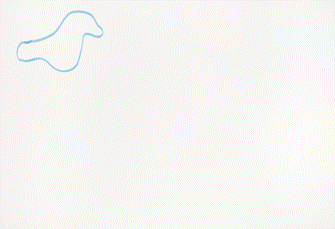 |
| |
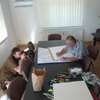 |
|
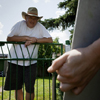 |
|
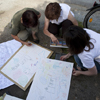 |
| |
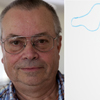 |
|
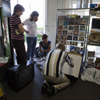 |
|
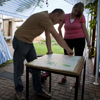 |
| |
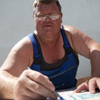 |
|
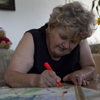 |
|
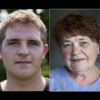 |
| |
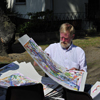 |
|
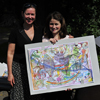 |
|
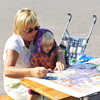 |
| |
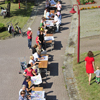 |
|
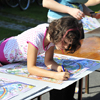 |
|
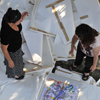 |
| |
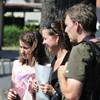 |
|
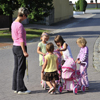 |
|
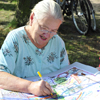 |
| |
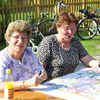 |
|
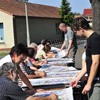 |
|
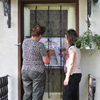 |
| |
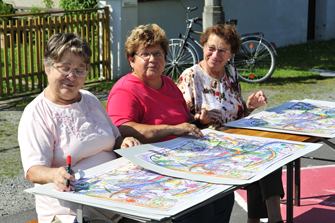 |
| |
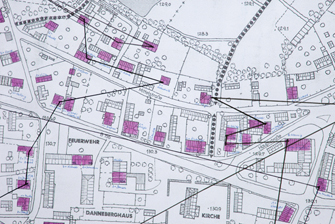
alle Bilder: Der Geist von Uhyst |
| |
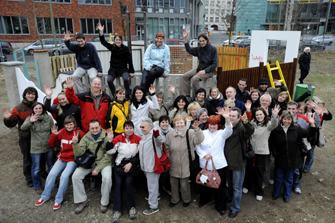
Kateřina Šedá, Over And Over, 2008, action (Installation im Skulpurenpark, Berlin -- 5. Berlin Biennial), Foto Tomki Němec |
|